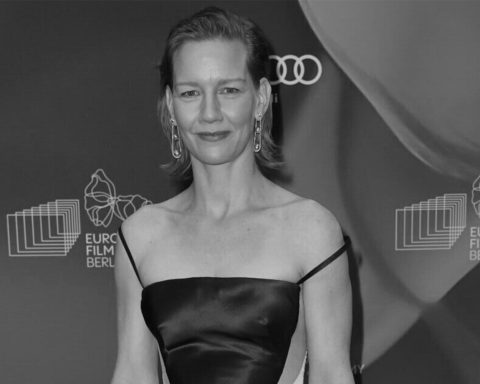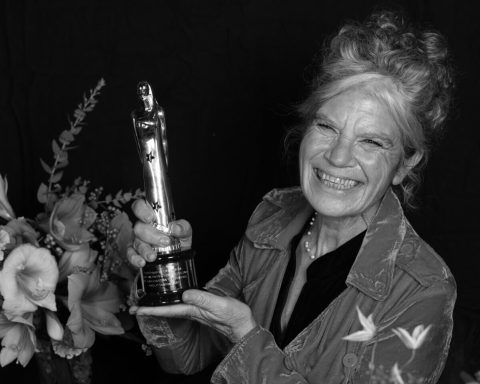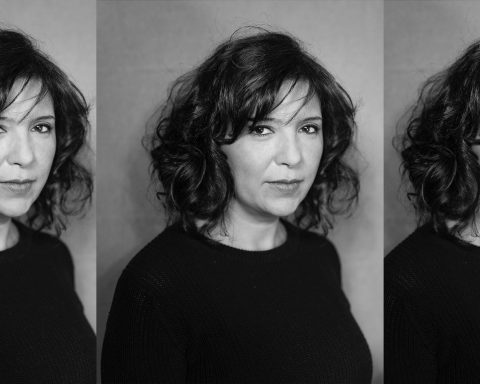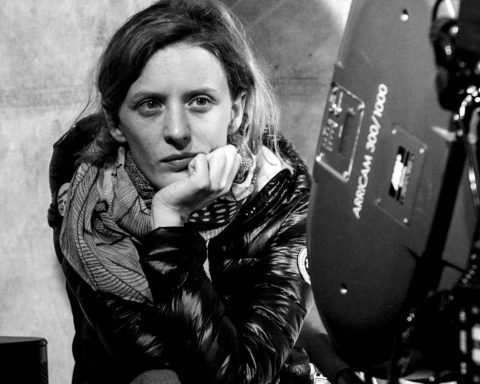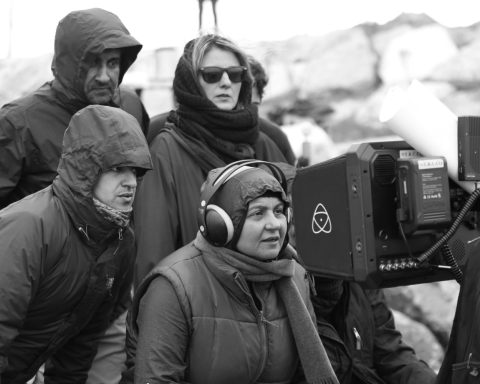Heather McIntosh is a composer whose credits include “Compliance,” “Z for Zachariah” and “One Dollar” directed by Craig Zobel, “Faults” and “The Art of Self-Defense” directed by Riley Stearns, Astra Taylor’s “Examined Life” and “What is Democracy?,” “The Quarry” directed by Scott Teems, the original score for Amy Scott’s documentaries “Hal” and “Sheryl” – about Hal Ashby and Sheryl Crow respectively –, “The L Word: Generation Q” and “Partner Track,” both series co-composed with Allyson Newman. She is also an alumna of the Sundance Institute Music & Sound Design Labs at Skywalker Sound, a Sundance Institute Time Warner Foundation Fellow, and a member of the Academy of Motion Picture, Arts and Sciences, the Recording Academy and the Television Academy. Heather started her musical career playing with the bands of the Elephant 6 Collective, Gnarls Barkley, and Lil Wayne. She has recorded with Animal Collective, Norah Jones, and St. Vincent, and has performed on stage with a variety of artists, such as Bright Eyes, of Montreal, Cat Power and John C.Reilly and Friends. Following her touring days, she has been regularly composing music for film and television since 2011.
Tara Karajica talks to Heather McIntosh about her score for Susanna Fogel’s latest feature, “Cat Person,” based on based on the 2017 short story of the same name written by Kristen Roupenian for “The New Yorker,” that has just premiered at this year’s Sundance Film Festival, her career so far, feminism in film composing and what she is up to next.
What made you want to become a film composer?
Heather McIntosh: I always wanted to do something with music. I worked at a video store and studied Composition in college. While there, I was writing chamber music and I played the cello. So, I just never really thought there was a place for chamber music in film scores which, of course, now I feel is a little ridiculous but, at the time, I would think about film music as John Williams and Alan Silvestri, these giant sounding orchestral situations and then, I saw a film by Mike Leigh that had this amazing chamber score and it really changed my idea about [film composing]. I thought: “This is something I could really do” and it was really inspiring to me. So, that was my first point of entry. I’ve worked with dancers for a while after that, where we’d shoot a video of the rehearsal, and I would compose to that video. So, it felt a bit like film scoring.. So, that was my first practical hands-on version.
How do you tap into what music makes you feel in order to find the perfect sound to accompany the images and the special moments that transport us to another place, another time and even another world?
H.M.-I.: I mean, for me, it feels like the picture comes first. So, taking in the film and meeting with the filmmaker, talking about that story, really being in the story also. So, it just takes me really immersing myself in the world and the images that they’re creating, and getting as many different entry points as I can to communicate with the director, be it: “Oh, here’s some playlists I was listening to when I was writing the script or when I was developing [the film]” if they weren’t the writer or getting a chance to watch as many movies that maybe influenced the director sometimes is a great entry point. Being able to have open conversations to do that. And then, to be open to what the picture needs. I feel like it’s really important. And, I love color and thinking about textures and unique ways. So, all of those things come together and lead to that aspect of finding the right thing. And then, a lot of it is just experimentation and being such a film lover and getting in there and doing it.
How do you get in the zone? Does your creative process differ from project to project? Do you have rituals?
H.M.-I.: Sometimes, I will just watch the cut and let ideas flow out. It really depends – for some projects, the deadline is so fast, you just go completely visceral and other projects, you have a lot of time to really develop ideas and go back and forth. But I try to write everyday, especially when I’m in deadline mode and it’s necessary, and a lot of it is just getting a chance to watch it a bunch, get inside of it and listen to those playlists, actually; those are really useful.
How did you get on board Cat Person? What drew you to this film?
H.M.-I.: I got an email about it. I had met the editor of the film [Jacob Craycroft] at Sundance back in 2012. He had seen a film I scored called Compliance that was directed by Craig Zobel and he very much liked my work and just thought it would be a cool fit for this. Also, a couple other people reached out; it’s not that it’s a small world, but a couple of different people were familiar with my work and they reached out to friends of friends and then I was sent a link of the New Yorker short story. And, I just thought: “What an interesting space to be in!” It’s like a dance. In the film, there’s humor and it makes you uncomfortable and it’s got a lot of tension and it’s a lot of really fascinating sonic spaces to explore and the dating world was an interesting point of entry for making art.
In your score for Cat Person, you balance humor and horror – you have horror notes and more jovial notes. Can you talk about scoring the film and finding the perfect balance between these two very opposite sounds?
H.M.-I.: Yes. It was tricky! I feel like it took us a while to find that perfect balance, but my initial instinct when I started the opening of the film was to score way more full sounding orchestration than what we ended up on. And, it was so funny – I’d send out those first demos and Susanna [Fogel] would be like: “This is so great, but can you do less?” So, I kept peeling away and peeling away and peeling away. I think that one of the first things that we figured out was that it left you room for the humor and those uncomfortable moments to really breathe. And then, I think the biggest thing that helped us find that balance was when we figured out what were we going to do with the opening. We were going to use the song by Molly Lewis, who’s this really amazing virtuosic whistler and it all of a sudden sparked this great idea of just using the human whistle sound and you can use it in so many different ways. You think about the whistle as being this whistle while we work, not all birdsong sort of sound, but you can also do these cool weird linear, bended pitch things that sound like synthesizers or sound like a Theramin, which is such a classic horror music sound – you think about that like that sort of weird sound. But you can do that and make these really avant-garde textures with the whistling as well. I feel like once we found that, we were like: “Now, we have our touchstone of what the score needs” and everything came into place after that, but it did take a while to get there. I actually live in Los Angeles and the filmmakers live or were doing post-production in New York, so it was important for me to be there for the project. So, we actually spent time in the same room instead of being on Zoom like we have been for the past three years and that really helped us find it – just being together.
The horror notes in the film are very reminiscent of horror films. What was your inspiration for that sound?
H.M.-I.: I love writing horror, thriller and dark stuff and I can do that. I can live and breathe that sound. I think there’s something as being an avant-garde composer and cellist that it’s just in my DNA to do the horrific stuff like that. It just came to me, I guess. It was a space that I really like exploring and I got out my cello and played and built these big heavy textures.
Do you have a favorite project among those you’ve scored so far?
H.M.-I.: I mean, this one! I like to think that every project is my favorite. My first couple of film projects – it was just so exciting because it was so new. So, if I was to think about just those first things that I got to score, I worked with Astra Taylor on a documentary and that was one of my favorites because it’s the first time I got to do it. It was a real whirlwind! And then, Compliance with Craig Zobel was the first narrative film that came to Sundance that I scored, but this is my favorite now. Like I said, hopefully, every project you work on gets to be that sort of favorite thing; you’re in it and getting to experience the newness of it all is so great. I’ve loved working with Susanna. She’s an amazing director.
When you started out, I imagine you didn’t have any female role models in terms of film composing. Can you talk about that? Do you have any female role models right now?
H.M.-I.: There’s so many. I mean, it’s interesting. I feel like when I first was thinking about composing, you’re totally right, there really weren’t many female film composers. It wasn’t until I moved out to Los Angeles and I scored my first couple of films that Doreen Ringer-Ross, who was at BMI at the time, brought together all these women film composers and it was sort of the first cell or the very beginning of this organization which became the Alliance For Women Film Composers that I’m really active with now. At first, I didn’t know anyone, but then I was brought together in this room of just amazing people. Laura Karpman and Lolita Ritmanis are really amazing. There are so many people that are actually starting to get some attention. It’s really exciting. Chanda Dancy is doing great work. There are just many! It was that first meeting that was probably maybe in 2012; it was great to be in the same room with so many other women composers and, at that point, it was like maybe twenty. And now, when we have meetings, the numbers are exponentially greater. So, it’s cool to see so many folks doing it, getting into it and hopefully there’s a little bit more visibility on that these days.
Do you have a favorite film by a female film filmmaker and one that you would really love to work with?
H.M.-I.: I love Jane Campion! Anything by her. She’s amazing. I love Angel at My Table. I love everything that she’s done. She’s fabulous. That would be mind-blowing!
Are you a feminist? If so, how does it inform your composing?
H.M.-I.: When I played when I was younger, I didn’t know if I was, but I definitely am 100% a feminist and it totally affects my day-to-day life and, because of that, it must affect my music in some way. I think it’s important to have women and non-binary people behind the camera on all levels, be it director, DP, editor, composer… to tell those stories – and there’s so much power that comes from hearing women’s stories and empathy that comes from hearing women’s stories and not to say that men can’t tell those stories, but I do think that when you can actually step away from the male gaze, and really work the interior voice of women’s wants, needs and desires, you can really get to the good stuff. And, hopefully, empathy is the biggest thing of all, and that’s what film does. It gets you inside other people’s minds. It’s fascinating. There’s a real poetry to it. So, yes, I’m a feminist.
Can you talk about your touring days? H.M.-I.: I lived in Athens, Georgia for a long time and I played in a bunch of indie rock bands that were under the Elephant 6 umbrella. So, the larger bands that are associated with that would be a band called Neutral Milk Hotel, or The Olivia Tremor Control, but I played in a band called Circulatory System and I had my own little band called The Instruments. We would just go around the country, get in the van, drive to all our dates, sleep on the floor… And, from that, I started playing cello with other folks that I didn’t know for hire and so, I did a lot of studio work. Over those years, I went on tour with the band Bright Eyes and I ended up touring with the band Gnarls Barkley for a year and playing on Saturday Night Live. And then, I played with the hip hop artist Little Wayne during the “Tha Carter III” era of his career, in 2008 and 2009. I also played cello on studio records. I played on Belle and Sebastian’s record and the first St. Vincent record and the Animal Collective EP… So, it’s a real mix. I played bass with Little Wayne and Gnarls Barkley and then pretty much everything else was cello.
What would you say your sound is?
H.M.-I.: I like to think that I’m a shapeshifter. I like to challenge myself with different genres. Yes, I’m really comfortable in a psychological tense, panic attacky type of scoring space, but I’ve scored a lot of comedy and romance stuff. I also co-scored The L Word: Generation Q television show that’s on Showtime. So, I’d like to think that I’ve got a lot of different hats that I get to wear. I don’t know if it’s specifically a sound, but I do use a lot of cello. That definitely is part of it. And, like I said, I love the thriller/horror spaces, but I do really like stretching and seeing what my version of comedy or my version of a chase scene sounds like. So, I think that’s part of my journey right now as well.
What is the best score ever, according to you? And, your favorite one?
H.M.-I.: My goodness! That’s tricky! I love Angelo Badalamenti’s score to Twin Peaks. I think that’s amazing. I know it’s not a film score. I guess you could count Fire walk With Me in that same wheelhouse? That’s one that I could go back to anytime and I love the simplicity of it, but that there are also moments of such madness and discomfort, but also the most simple beautiful melody lines as well. It really hits all the sweet spots for me.
What are your next project?
H.M.-I.: I have a couple of things that it’s too early to talk about, but there’s a television series that I’m hoping to be able to talk about next time we chat and a sci-fi thing that I’m really excited about.
Photo credits: Rachel Cassells.
This interview was conducted remotely at the 2023 Sundance Film Festival.





